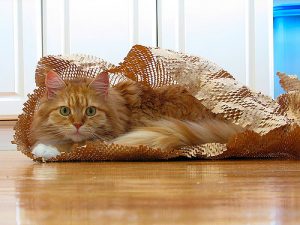Flexible Packaging
Flexible packaging materials are everywhere nowadays. Used for manufacturing not only bags, pouches for food and non-food products, but suitable for creating various other forms of packaging, these resistant and easy to handle materials come with numerous benefits – here are the most important types and their advantages.
Types of Flexible Materials Used for Packaging
The term flexible packaging material is used for any packaging solution that can readily change shape when wrapped around the product to be contained – here are some of the most common types:
– Vacuum pouches – made from a mixture of polythene and nylon, these solutions efficiently block out moisture and air, so they are great for packaging food products
– Thermoforming film – this material seals the product perfectly and it is puncture-resistant, yet easy to open, features that make it the preferred solution for both food and non-food products, especially vegetables, dairy and cosmetics
– Lamination film – an excellent solution for packaging that has large prints on, such as shopping bags. Laminated film solutions are available with different oxygen transmission rates, so there is a suitable type of thermoforming film for any product
– Inner bulk liners – great for protecting the product inside against moisture, dust, pests and other contaminants coming from the outside, these liners can efficiently optimize logistics processes.
Enhanced Product Appearance and Visibility
The flexible materials used for manufacturing packaging materials offer versatility in terms of shape, size, transparency, chemical and physical features. Made from various types of plastic or from very thin gauge aluminum foil, these packaging solutions can accommodate products of any size and shape, they are available in transparent versions or in versions partially or completely covered in print. The advanced technologies available for flexible materials allows for putting on vivid prints of the highest quality, making the product inside the packaging more attractive for customers.
Enhanced Safety
Flexible materials are the preferred choice for manufacturers in the food industry because they are free from any contaminants and they keep the product inside fresh for longer.
Flexible materials are safer for the environment as well:
– They require less energy to produce, therefore the production process generates smaller quantities of greenhouse emissions
– They can be fitted with components that allow the packaging to be reused, such as spouts or zip locks, so they result in much less waste.
Easy Usage
Flexible materials are thin and light-weight, which means that they do not add considerable weight to the weight of the product like it would be the case with metal cans or packaging made from wood, therefore they are easy to store and easy to transport. Consumers also prefer this type of packaging because it is convenient, especially if the design of the packaging includes re-sealable features.
Versatility
Flexible materials are used not only for packaging food products – non-food products benefit from the advantages of these great solutions just as much, making flexible solutions extendable to almost any kind of product, small and large, regularly shaped and irregularly shaped items alike. Shelf appeal, comfortable usage and enhanced safety are features that any type of product can benefit from and features that flexible materials readily offer.
Comments are Disabled